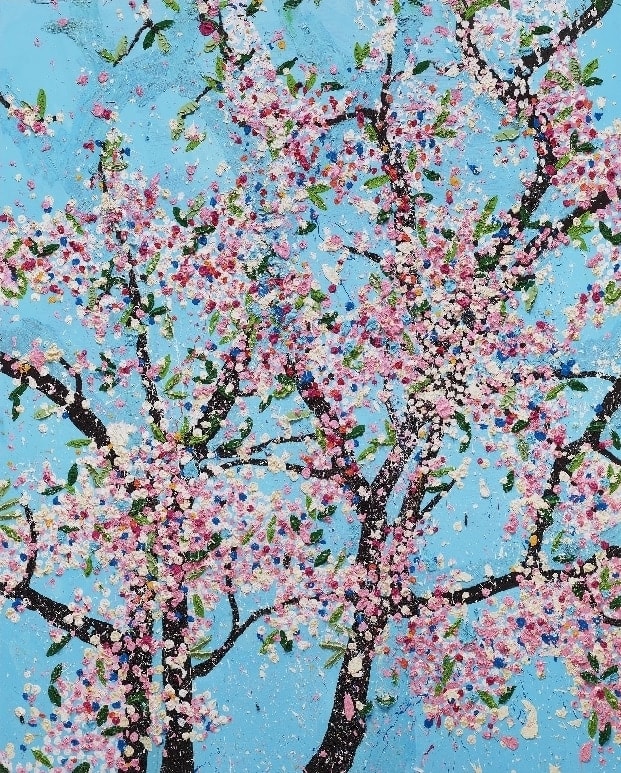Damien Hirst
Politeness - The Virtues H9-4, 2021
Laminated Giclée print on aluminium composite panel
Hand signed and uniquely numbered 851/1549
Hand signed and uniquely numbered 851/1549
120 x 96 cm
47 1/4 x 37 3/4 in
47 1/4 x 37 3/4 in
Copyright The Artist
Cherry blossom print by Damien Hirst, The Virtues, published by HENI Editions. The eight prints are each titled after one of The Eight Virtues of Bushidō according to Nitobe Inazō...
Cherry blossom print by Damien Hirst, The Virtues, published by HENI Editions. The eight prints are each titled after one of The Eight Virtues of Bushidō according to Nitobe Inazō – Justice, Courage, Mercy, Politeness, Honesty, Honour, Loyalty, Control.
In 1900 Nitobe Inazō published a book, Bushidō: The Soul of Japan, which narrates for Western audiences the samurai code of ethics known as Bushidō. According to Nitobe, Bushidō literally translates to ‘Military-Knight-Ways’ and lists the ways in which fighting Japanese nobles were expected to maintain themselves in their daily and vocational lives. In Nitobe’s account this code is divided into eight virtues, which are responsible for customs such as the tea ceremony and behaviour like tranquillity even in the face of danger. Nitobe has stated his intention was to unveil the cultural similarities between Japan and the West, effectively concluding ‘that there are no East or West as far as human beings are concerned’.
Referencing Impressionism, Pointillism and Action Painting, the Cherry Blossoms are about the spontaneous joy of spring. Damien Hirst said “Cherry Blossoms are about beauty and life and death. They’re extreme – there’s something hopeful yet hopeless about them. They’re art but taken from nature. They’re about desire and how we process love and why we need it, but also these prints are about the momentary, the insane transience of beauty – a tree in full crazy blossom against a clear blue sky. How can you argue with that? It’s been so good to make these prints, to be completely lost in colour for a while. Blossoms are optimistic and bright yet fragile, just like we are and I hope that The Virtues can remind us to always try and get the most from life.”
In 1900 Nitobe Inazō published a book, Bushidō: The Soul of Japan, which narrates for Western audiences the samurai code of ethics known as Bushidō. According to Nitobe, Bushidō literally translates to ‘Military-Knight-Ways’ and lists the ways in which fighting Japanese nobles were expected to maintain themselves in their daily and vocational lives. In Nitobe’s account this code is divided into eight virtues, which are responsible for customs such as the tea ceremony and behaviour like tranquillity even in the face of danger. Nitobe has stated his intention was to unveil the cultural similarities between Japan and the West, effectively concluding ‘that there are no East or West as far as human beings are concerned’.
Referencing Impressionism, Pointillism and Action Painting, the Cherry Blossoms are about the spontaneous joy of spring. Damien Hirst said “Cherry Blossoms are about beauty and life and death. They’re extreme – there’s something hopeful yet hopeless about them. They’re art but taken from nature. They’re about desire and how we process love and why we need it, but also these prints are about the momentary, the insane transience of beauty – a tree in full crazy blossom against a clear blue sky. How can you argue with that? It’s been so good to make these prints, to be completely lost in colour for a while. Blossoms are optimistic and bright yet fragile, just like we are and I hope that The Virtues can remind us to always try and get the most from life.”
